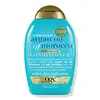What's inside
What's inside
 Benefits
Benefits

No benefits
 Concerns
Concerns

 Ingredients Side-by-side
Ingredients Side-by-side

Zinc Pyrithione 1%
AntiseborrhoeicWater
Skin ConditioningSodium Lauryl Sulfate
CleansingSodium Laureth Sulfate
CleansingGlycol Distearate
EmollientZinc Carbonate
Sodium Chloride
MaskingSodium Xylenesulfonate
Cocamidopropyl Betaine
CleansingParfum
MaskingDimethicone
EmollientSodium Benzoate
MaskingGuar Hydroxypropyltrimonium Chloride
Skin ConditioningMagnesium Carbonate Hydroxide
BufferingMethylchloroisothiazolinone
PreservativeMethylisothiazolinone
PreservativeBlue 1 Lake
Cosmetic ColorantCI 17200
Cosmetic ColorantZinc Pyrithione 1%, Water, Sodium Lauryl Sulfate, Sodium Laureth Sulfate, Glycol Distearate, Zinc Carbonate, Sodium Chloride, Sodium Xylenesulfonate, Cocamidopropyl Betaine, Parfum, Dimethicone, Sodium Benzoate, Guar Hydroxypropyltrimonium Chloride, Magnesium Carbonate Hydroxide, Methylchloroisothiazolinone, Methylisothiazolinone, Blue 1 Lake, CI 17200
Water
Skin ConditioningCetearyl Alcohol
EmollientCetyl Alcohol
EmollientBehentrimonium Chloride
PreservativeGlycerin
HumectantArgania Spinosa Kernel Oil
EmollientSilk Amino Acids
HumectantPPG-3 Benzyl Ether Myristate
EmollientDimethicone
EmollientPolyquaternium-47
Skin ConditioningSteareth-20
CleansingDisodium EDTA
Isopropyl Alcohol
SolventCitric Acid
BufferingSodium Hydroxide
BufferingSodium Benzoate
MaskingParfum
MaskingCI 19140
Cosmetic ColorantCI 16035
Cosmetic ColorantWater, Cetearyl Alcohol, Cetyl Alcohol, Behentrimonium Chloride, Glycerin, Argania Spinosa Kernel Oil, Silk Amino Acids, PPG-3 Benzyl Ether Myristate, Dimethicone, Polyquaternium-47, Steareth-20, Disodium EDTA, Isopropyl Alcohol, Citric Acid, Sodium Hydroxide, Sodium Benzoate, Parfum, CI 19140, CI 16035
 Reviews
Reviews

Ingredients Explained
These ingredients are found in both products.
Ingredients higher up in an ingredient list are typically present in a larger amount.
Dimethicone is a type of synthetic silicone created from natural materials such as quartz.
What it does:
Dimethicone comes in different viscosities:
Depending on the viscosity, dimethicone has different properties.
Ingredients lists don't always show which type is used, so we recommend reaching out to the brand if you have questions about the viscosity.
This ingredient is unlikely to cause irritation because it does not get absorbed into skin. However, people with silicone allergies should be careful about using this ingredient.
Note: Dimethicone may contribute to pilling. This is because it is not oil or water soluble, so pilling may occur when layered with products. When mixed with heavy oils in a formula, the outcome is also quite greasy.
Learn more about DimethiconeParfum is a catch-all term for an ingredient or more that is used to give a scent to products.
Also called "fragrance", this ingredient can be a blend of hundreds of chemicals or plant oils. This means every product with "fragrance" or "parfum" in the ingredients list is a different mixture.
For instance, Habanolide is a proprietary trade name for a specific aroma chemical. When used as a fragrance ingredient in cosmetics, most aroma chemicals fall under the broad labeling category of “FRAGRANCE” or “PARFUM” according to EU and US regulations.
The term 'parfum' or 'fragrance' is not regulated in many countries. In many cases, it is up to the brand to define this term.
For instance, many brands choose to label themselves as "fragrance-free" because they are not using synthetic fragrances. However, their products may still contain ingredients such as essential oils that are considered a fragrance by INCI standards.
One example is Calendula flower extract. Calendula is an essential oil that still imparts a scent or 'fragrance'.
Depending on the blend, the ingredients in the mixture can cause allergies and sensitivities on the skin. Some ingredients that are known EU allergens include linalool and citronellol.
Parfum can also be used to mask or cover an unpleasant scent.
The bottom line is: not all fragrances/parfum/ingredients are created equally. If you are worried about fragrances, we recommend taking a closer look at an ingredient. And of course, we always recommend speaking with a professional.
Learn more about ParfumSodium Benzoate is a preservative. It's used in both cosmetic and food products to inhibit the growth of mold and bacteria. It is typically produced synthetically.
Both the US FDA and EU Health Committee have approved the use of sodium benzoate. In the US, levels of 0.1% (of the total product) are allowed.
Sodium benzoate works as a preservative by inhibiting the growth of bacteria inside of cells. It prevents the cell from fermenting a type of sugar using an enzyme called phosphofructokinase.
It is the salt of benzoic acid. Foods containing sodium benzoate include soda, salad dressings, condiments, fruit juices, wines, and snack foods.
Studies for using ascorbic acid and sodium benzoate in cosmetics are lacking, especially in skincare routines with multiple steps.
We always recommend speaking with a professional, such as a dermatologist, if you have any concerns.
Learn more about Sodium BenzoateWater. It's the most common cosmetic ingredient of all. You'll usually see it at the top of ingredient lists, meaning that it makes up the largest part of the product.
So why is it so popular? Water most often acts as a solvent - this means that it helps dissolve other ingredients into the formulation.
You'll also recognize water as that liquid we all need to stay alive. If you see this, drink a glass of water. Stay hydrated!
Learn more about Water